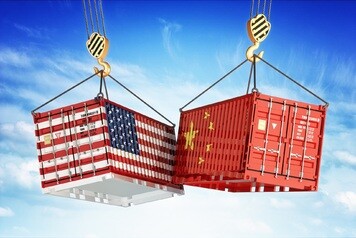Import tariff hikes prompt businesses to pursue mitigation strategies such as stockpiling and offshoring
Santa Clara, Calif. – April 1, 2019 – With the US imposing higher tariffs on Chinese imports and China retaliating in kind, global gross domestic product (GDP) growth is anticipated to slow down from 3.7 percent in 2018 to 3.2 percent or lower in 2019, depending on trade war scenario conditions. While the US avoided increasing tariffs on $200 billion worth of Chinese imports from 10 percent to 25 percent on March 1, 2019, it remains to be seen if a US-China trade deal can be struck. Even if brokered, it is possible that the removal of US tariffs on Chinese imports will take place gradually over years.
For further information on this analysis, please visit: http://frost.ly/3bu
 “US-China trade wars are negatively impacting export-reliant economies such as Germany and Japan,” said Neha Anna Thomas, Senior Economist, Emerging Market Innovation. “There are other indirect trade war effects that can be anticipated, such as weaker global crude oil demand and downside pressures on Asian economies that supply raw materials and components to China.”
“US-China trade wars are negatively impacting export-reliant economies such as Germany and Japan,” said Neha Anna Thomas, Senior Economist, Emerging Market Innovation. “There are other indirect trade war effects that can be anticipated, such as weaker global crude oil demand and downside pressures on Asian economies that supply raw materials and components to China.”
Frost & Sullivan’s recent analysis, Global Trade Wars Impact, Forecast to 2020, provides insights into additional tariffs under recent trade wars and trade war scenarios. It analyzes the impact of trade wars on the economy and industry, recommends mitigation strategies, and examines growth opportunities. Businesses can leverage this research to gain more clarity on the trade wars outlook and refine their strategic planning capabilities.
“Southeast Asia appears to have emerged as a winner in this context, with businesses increasingly looking at moving production outside of China,” noted Thomas. “In terms of impact per industry, the automotive sector came under pressure in 2018 on account of additional tariffs imposed by China and the US on each other’s automotive imports, as well as higher US tariffs on steel and aluminum imports. The threat of as much as 25 percent US tariffs on car and parts imports from the rest of the world remains.”
Companies specializing in industrial robots and automation of processes and operations could experience gains as businesses look to cut production costs and offset import tariff hikes. Industries like warehousing also will gain from greater stockpiling in anticipation of new tariffs.
The four likely trade war scenarios for 2019 are:
- Continuation of trade wars (continuation of additional tariffs from 2018, with no new tariff imposition).
- Partial tariff removal.
- Intensification of trade wars.
- The conclusion of trade wars.
At present, a conclusion appears an unlikely scenario.
Global Trade Wars Impact, Forecast to 2020 is part of Frost & Sullivan’s global Emerging Market Innovation Growth Partnership Service program.
About Frost & Sullivan
For over five decades, Frost & Sullivan has become world-renowned for its role in helping investors, corporate leaders and governments navigate economic changes and identify disruptive technologies, Mega Trends, new business models and companies to action, resulting in a continuous flow of growth opportunities to drive future success. Contact us: Start the discussion.
Global Trade Wars Impact, Forecast to 2020
9AE6-EMI
Contact:
Francesca Valente
P: +1 210 348 10 12



